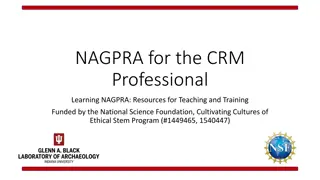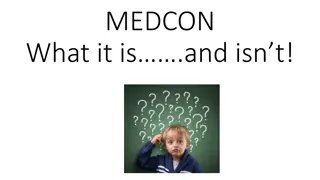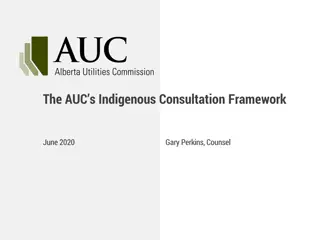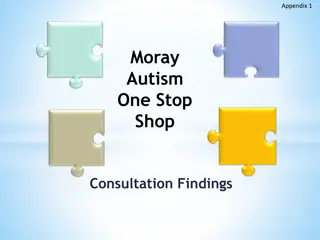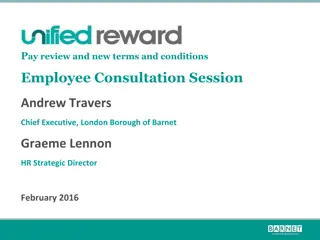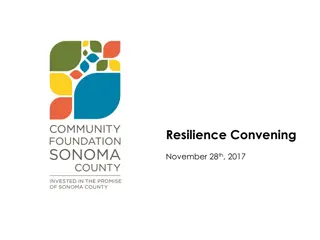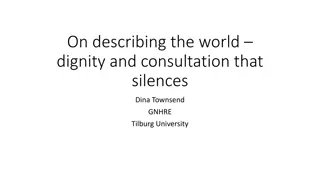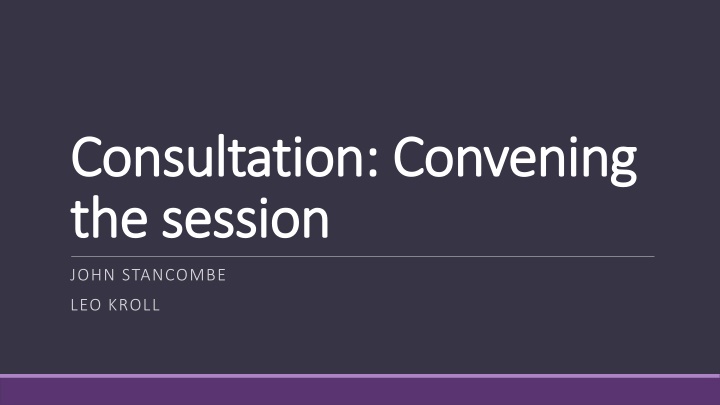
Understanding the Process of Change in Consultation Sessions
Exploring the importance of convening the session, common factors in the change process, theories of change, motivation to change, and psychological flexibility within consultation settings. Learn about how relationships, techniques, and readiness influence successful outcomes.
Download Presentation

Please find below an Image/Link to download the presentation.
The content on the website is provided AS IS for your information and personal use only. It may not be sold, licensed, or shared on other websites without obtaining consent from the author. If you encounter any issues during the download, it is possible that the publisher has removed the file from their server.
You are allowed to download the files provided on this website for personal or commercial use, subject to the condition that they are used lawfully. All files are the property of their respective owners.
The content on the website is provided AS IS for your information and personal use only. It may not be sold, licensed, or shared on other websites without obtaining consent from the author.
E N D
Presentation Transcript
Consultation: Convening Consultation: Convening the session the session JOHN STANCOMBE LEO KROLL
Why is convening the session important? It sets the stance for all that follows Promotes collaboration rather than a receiving care approach Prompts an active, engaged approach to change Promotes the key change factors; relationship and technique Technique based on problem solving and behavioural and cognitive principles
Common factors in change process the importance of the relationship between patient and therapist is the single factor which seems most relevant to the outcome of behaviour therapy. (Meyer & Gelder, 1963) You will get further with a patient with a good therapeutic relationship and a lousy technique, than you will with good techniques and a lousy relationship (Meyer).
Theory of change How does change happen? Does the consultation model used have a theory of how change comes about? Calgary Cambridge consultation promotes good (therapeutic) practice, and is based mostly on a diagnostic medical model framed in a person-centered collaborative care approach Many psychological therapy models are based on a similar approach Change process prompts the consultee to thinking, feel and do things differently Underpinning all of this is that the individual has to want to think, feel or do things differently
Motivation to change Numerous theories and techniques Engagement and disengagement with goals? Skill development and Skill deficits Psychological flexibility Value focus, rather than goal focus as a motivator Readiness for change (importance) Confidence to change (efficacy)
Psychological flexibility Made up of a number of different components, often summarise as three pillars Similar to TRAP and TRAC in behavioural activation (Trigger response avoidance pattern versus, TR alternative coping pattern) Similar to the SDC model (stress, diathesis, coping) model Emotion focused coping versus problem focused coping
Three pillars of motivation Open Aware Engaged Tolerate distress in self and others Flexible mindset, rather than predominately rigid, and negative Minimal harmful behaviours (e.g. drugs, alcohol, poor self care, violence to self or others Able to focus on present situation, not preoccupied by past, or future Able to put things in context, see from other point of view Able to see human condition as fundamentally flawed, no one is perfect! Able to define specific goals that align to values (what really matters) in self and others Able to understand different goals and values exist in self and others Willingness to try out new behaviours, activities Willingness to share responsibility for actions with others
Readiness scaling for change motivation Open Aware Engaged 1. Lots of avoidance, harmful and rigid behaviours and mindset 2 3 4 5 6 7 8 9 10. Able to tolerate distress, and be flexible, growth mindset 1. Preoccupied about past or future, unfairness of life 2 3 4 5 6 7 8 9 10. Focused on present and what can be achieved 1. Not willing to try new things outs, blames others 2 3 4 5 6 7 8 9 10. Willing to give things a try out, and share responsibility for outcome
Self-application You should apply the three pillars to yourself as well With some families you are likely to be more motivated than with others On some days you are likely to be more motivated than on other days During your career your motivation is likely to vary depending on numerous contextual factors
Other ways Motivational interviewing scales Importance scale Confidence for change scale https://www.centerforebp.case.edu/client-files/pdf/readinessruler.pdf Efficacy measures Self efficacy scale (CYP-IAPT measure) for parents https://www.corc.uk.net/media/1279/brief-parental- self-efficacy-scale.pdf


